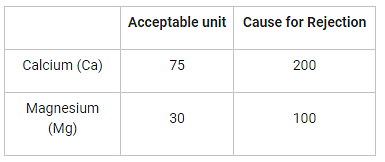Practice Test: Civil Engineering (CE)- 6 - Civil Engineering (CE) MCQ
30 Questions MCQ Test GATE Civil Engineering (CE) 2025 Mock Test Series - Practice Test: Civil Engineering (CE)- 6
Identify the correct spelling of the word.
| 1 Crore+ students have signed up on EduRev. Have you? Download the App |
She is brave. Her brother is more brave.
Select the most suitable sentence with respect to grammar and usage.
When a four digit number is divided by 65, it leaves a remainder of 29. If the same number is divided by 13, the remainder would be______
Complete the following sentence.
I was ___ ___ for the bus and then I ___ sight of Craig passing by.
4 – digit number greater than 5000 are randomly formed from the digits 0, 2, 3, 5 and 7. The probability of forming a number divisible by 5 when the digits are repeated is ______
It is theoretically possible that bacteria developed on Venus early in its history and that some were carried to Earth by a meteorite. However, strains of bacteria from different planets would probably have substantial differences in protein structure that would persist over time, and no two bacterial strains on Earth are different enough to have arisen on different planets. So, even if bacteria did arrive on Earth from Venus, they must have died out.
The argument is most vulnerable to which of the following criticisms?
A man sells three articles A, B, C and gains 10% on A, 20% on B and loses 10% on C. He breaks even when combined selling prices of A and C are considered, whereas he gains 5% when combined selling prices of B and C are considered. What is his net loss or gain on the sale of all the articles?

Which of the following inferences can be drawn from the above graph?
DRQP is a small square of side a in the corner of a big square ABCD of side A. What is the ratio of the area of the quadrilateral PBRQ to that of the square ABCD, given A/a = 3?
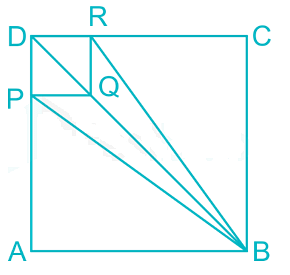
If the Laplace transform of y(t) is given by Y(s) = L(y(t)) =  then y(0) + y'(0) = _____.
then y(0) + y'(0) = _____.
Consider the following statements P and Q:
(P):If M =  then M is singular.
then M is singular.
(Q): Let S be a diagonalizable matrix. If T is a matrix such that S + 5 T = I, then T is diagonalizable.
Which of the above statements hold TRUE?
 = 0 .If x = 0 at t = 0 and x = 1 at t = 1, the value of x at t = 2 is
= 0 .If x = 0 at t = 0 and x = 1 at t = 1, the value of x at t = 2 is
If for two vectors and , sum  is perpendicular to the difference
is perpendicular to the difference  The ratio of their magnitude is
The ratio of their magnitude is
Consider plane truss below and identify the correct option.
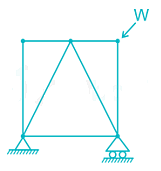
Which of the following given statement is not correct?
The permissible limit for chlorides in water used for mixing concrete for reinforced concrete work as per IS 456 : 2000 is
The ratio of shear modulus to bulk modulus of the material for poisson ratio of 0.21 will be
A partially saturated soil sample is taken from a borrow pit and tested for its specific gravity, which is found to be 2.64. If the air content and water content of this sample is 20% and 26.5% respectively. Calculate the void ratio of the partially saturated soil sample when water content is 26.5% and change in the air content of the soil sample if the water content increased to 30%
Assume void ratio to be constant.
A plate load test was conducted in clay on a 450 mm diameter plate and the settlement of the plate is recorded as 10mm. if the settlement of foundation is not to exceed 35 mm, the width of the foundation required will be _____mm.
Following results are obtained after the sieve analysis of the soil sample:
(i) % of particles passing through 0.075 mm IS sieve = 4%
(ii) % of particles having size greater than 0.075 mm retained over 4.75 mm IS sieve = 62%
(iii) Coefficient of uniformity = 5
(iv) Coefficient of curvature = 1.5
As per ISSC system, the soil is classified as:
Which among the following clay mineral has least base exchange capacity?
The given network diagram shows the detailed necessary for the CPM network analysis:

All the numerical values are given in days. The free float for the activity (3) – (5) will be
A rectangular channel of 3m width carrying a discharge of 6m3/sec. If the specific Energy at depth (y1) is 20% more than specific Energy at critical depth, Then the depth of flow (y1) will be ________ m.
Take acceleration due to gravity to be 9.81 m/s2
As per IS 10500: 2012, the permissible limits in absence of alternate source of water for calcium and magnesium in the drinking water respectively will be (in ppm)
A confined coastal aquifer has an effective depth of 25 m. During the experiment to check the salt concentration in the water with discharge 0.5 m3/s, the head difference in the two observation well was 0.5 m, located at 271.8 m and 100 m distance form the center of the test well. The hydraulic conductivity of the aquifer (in mm/s) will be _______.
As per IRC: 31-102, the Vehicle Damage Factor (VDF) is a multiplier to convert the number of commercial vehicles of different axle loads and axle configuration into the number of repetitions of standard axle load of magnitude.
The speed and the theoretical maximum capacity of a single lane highway are 5m/s and 900 vehicle per hour respectively. The space headway and time headway respectively are:
Rapid curing bitumen are the bitumen cutback with commonly used distillate will be
|
31 docs|280 tests
|
|
31 docs|280 tests
|





 =0.397
=0.397 =
= 







 will be _____
will be _____







 will be an eigen value of matrix
will be an eigen value of matrix  where K is a scalar.
where K is a scalar.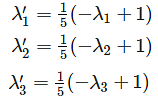






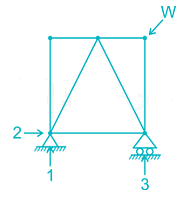










 = 1.1122m
= 1.1122m

